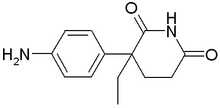Pituitary tumors account for 10 percent of all intracranial tumors. Because these tumors are often curable, accurate diagnosis is important. Magnetic resonance imaging (MRI) with gadolinium enhancement has greatly improved pituitary visualization. The goals of treatment include normalization of pituitary secretion, alleviation of symptoms and signs, and shrinkage or elimination of large tumors that might compress vital structures. Shimon and Melmed review the management of pituitary tumors (see the accompanying table).
The authors used the MEDLINE database to search for relevant literature on pituitary tumors. Prolactinoma, the most common hormone-secreting pituitary tumor, accounts for approximately 60 percent of functioning tumors. These tumors are characterized by mildly elevated serum prolactin levels accompanied by amenorrhea, infertility and galactorrhea in women, and higher prolactin levels are accompanied by impotence, loss of libido or infertility in men. Initial medical therapy consists of a dopamine agonist (cabergoline or bromocriptine). Patients should be monitored by regular measurements of serum prolactin levels, pituitary MRI and visual field examinations. Discontinuation of therapy often results in recurrent hyperprolactinemia. Surgery is infrequently necessary for resistant tumors.
Growth hormoneEsecreting adenomas account for 20 percent of functional pituitary tumors. They are often macroadenomas and present with parasellar or suprasellar invasion. Because symptoms of acromegaly develop slowly, diagnosis may be delayed for seven to 10 years. Headaches, hypopituitarism and visual disturbances are common manifestations. Surgery is the preferred treatment for growth hormoneEsecreting adenomas. Somatostatin analogs such as octreotide, which suppress growth hormone secretion, may be used as adjuvant therapy or, in selected cases, as primary treatment. Combined treatment with octreotide and bromocriptine has an additive effect on suppression of growth hormone and insulin-like growth factor I. Bromocriptine has increased bioactivity when administered with octreotide. Sellar irradiation may be used in patients resistant to medical management, but it has a slow response rate (five to 10 years) and a high rate of late hypopituitarism.
Adrenocorticotropin-secreting tumors constitute 15 percent of functional pituitary adenomas. These tumors are usually treated surgically. Transsphenoidal adenomectomy has a cure rate of 80 to 90 percent for microadenomas, but the rate is up to only 50 percent for macroadenomas. Hypopituitarism with permanent hypocortisolism may occur following surgery. If surgery fails to control the condition, pituitary irradiation, possibly combined with medical treatment, can be used. Adjuvant drug therapies include the adrenolytic agent mitotane, ketaconazole, aminoglutethimide and metyrapone, which decrease cortisol levels without affecting adrenocorticotropin hormone levels. Mitotane therapy combined with irradiation is the preferred treatment if surgical treatment fails.
Adenomas secreting thyroid-stimulating hormone (TSH) are rare and result in secondary hyperthyroxinemia and goiter. Surgical excision or debulking is the treatment of choice. Antithyroid medications are not used because of the possibility of increased tumor growth and aggressiveness from the release of the thyrotroph cell from thyroid feedback inhibition. Treatment with a somatostatin analog, such as octreotide, can reduce TSH production when surgery and radiation therapy are not effective. Dopamine agonists are not effective in suppressing TSH secretion from these tumors.
Nonfunctioning pituitary adenomas (gonadotroph-cell adenomas) account for approximately one third of all pituitary tumors and are the most common macroadenomas. The presentation of these tumors is determined by local mass effects, including optic chiasm pressure, neurologic symptoms and deficient pituitary hormone secretion. Hypogonadism may be present. Transsphenoidal surgery is the only way to decrease tumor size and relieve mass effects. These tumors have shown poor response to drug treatment.
Shimon I, Melmed S. Management of pituitary tumors. Ann Intern Med September 15, 1998;129:472-83.
COPYRIGHT 1999 American Academy of Family Physicians
COPYRIGHT 2000 Gale Group



